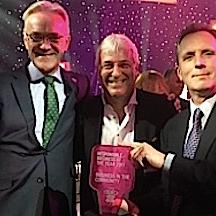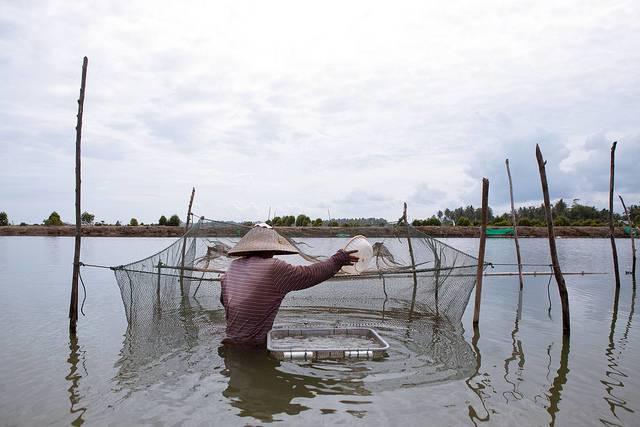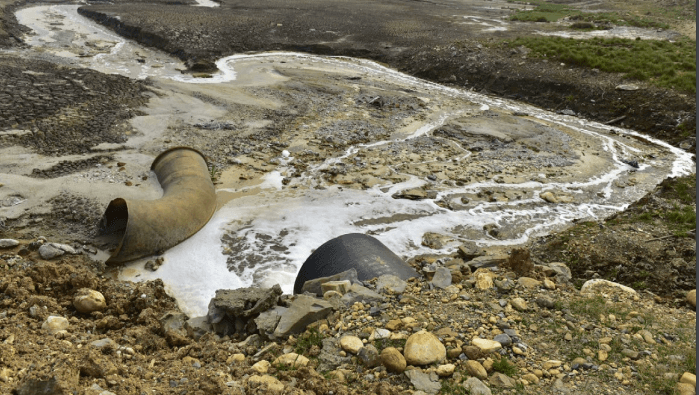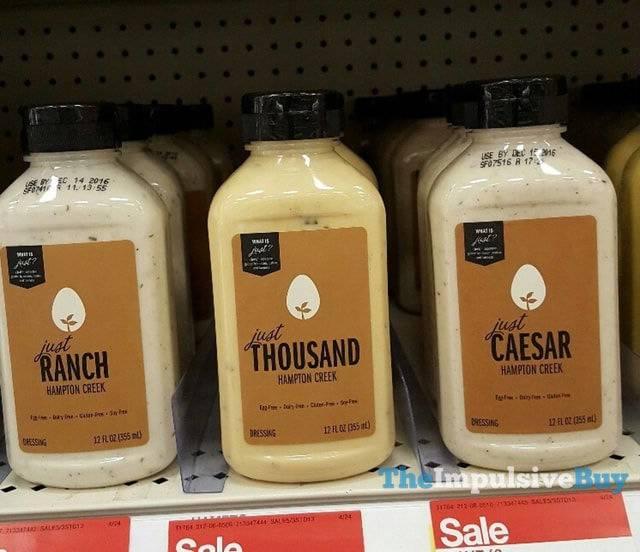Winners of Business in the Community?s Responsible Business Awards 2017 announced


Action or belief?


Six Companies Who Go Global and Local With CSR


Submitted by Megan Wild
What are your reasons for supporting or withholding support from specific companies?
Does Corporate Social Responsibility (CSR) sound familiar? Whether you’re aware of it or not, people often align with an organization's values or implementation of social responsibility in the workplace or community — locally and globally.
Research demonstrates the role of CSR by detailing that 42% of consumers rely on an organization’s CSR practices to form a perception.
Many companies are on board with CSR, as it directly affects them and the communities they reach. Let’s take a look at some companies who have successfully implemented CSR practices:
1. Burt’s Bees
Burt’s Bees strives to remain socially responsible in their efforts at home and around the globe. To remain on top of environmental practices, they host educational sessions for their employees on a regular basis. Looking to the community, they created The Greater Good Foundation to contribute toward non-profit initiatives that align with their practices and beliefs. Burt’s Bees is also a proud partner with Habitat for Humanity in their local community.
2. Microsoft
Microsoft implements CSR through their work to gain customer trust, empower people and use the planet responsibly. Their U.S employees have given over 2 million hours of their time through volunteer efforts since Microsoft’s volunteer match program began.
A few of Microsoft’s endeavors include moving toward a clean energy infrastructure and the employment of programs such as Microsoft YouthSpark and the Lagos Solar Project. Seeing a need for educational, employment and entrepreneurial opportunities, they created Microsoft YouthSpark. This program has opened opportunities for over 300 million youth to date, and Microsoft aims to continue its growth by investing in today’s youth.
Participating globally, Microsoft began the Lagos Solar Project in Nigeria. This project brings electricity to schools in remote communities that might otherwise go without it.
3. Reynolds
Reynolds’ corporate culture revolves around their commitment to community and social responsibility. They demonstrate their efforts through continued support of the United Way of the Capital Region and recent partnerships with the PinnacleHealth System, Brethren Housing Association and local contractors for a joint project — The Hummel Street Project.
Since 1997, Reynolds’ employees have strengthened their support of the United Way through contributions totaling over $1 million. A more recent community contribution, the Hummel Street Project, outlines a project committed to building five new townhomes to provide homes for homeless women and children in the Harrisburg, PA community.
4. Google
With a high public perception of a great work atmosphere, Google gains recognition for treating their employees above the standard norm. This alone ranks them as a top CSR organization, but they’ve also implemented community practices through their Google Green program.
Google Green is the company’s commitment to use environmental resources responsibly. Their efforts range from the fully-repurposed desks in their California office to remaining carbon neutral for the past ten years.
5. The Little Market
The Little Market measures organizational success not by profit margin, but through their ability to have a positive social and economic influence on the artisans they employ and the communities they purchase from. A few of their company-wide initiatives include community development, fair trade and fair wage practices.
Their artisans can reciprocate back into their communities through support education for children, literacy for adults, health care and human rights training. All of their artisans employ fair trade practices, and all artisans receive a living wage.
6. Ben & Jerry’s
Ben & Jerry’s outlines an encouragement in their social mission to remain committed to their community and the world’s best interest. They’ve contributed to the reduction of their carbon footprint by launching various programs and campaigns focused on global warming.
Other socially responsible business practices include their caring dairy, cage-free, Greyston Bakery, fair trade and non-GMO implementations.
The execution of Corporate Social Responsibility falls on the organization to decide how best to implement and on what scale. These organizations represent a mere few of the good CSR practices. Challenge yourself to research the companies you support and if their CSR practices align with what you value.
How WWF Stops Deforestation Worldwide with Corporate Engagement


The Ouachita Mountains in Arkansas
According to World Wildlife Fund (WWF), up to 58,000 square miles of forest is lost annually – the equivalent of 48 football fields a minute. The result of this deforestation is a threat to the estimated 1.6 billion people who rely on forests for their way of life, as well as to some of the most endangered plants and animals on the planet.
The factors behind deforestation are complicated, and the tactics necessary to halt it vary by location to location. But for over 25 years, one of WWF’s success stories has been the Global Forest and Trade Network (GFTN), which the NGO says connects over 200 companies, communities and government agencies in over 30 countries. This collaboration has a long history of results, which are necessary as some estimates suggest the amount of wood culled from forests annually may need to triple by mid-century.
By bringing various stakeholders together, WWF insists that GFTN has ensured millions of acres of forests have become certified as sustainably managed, while fostering a market for pulp and paper that provide economic benefits for the companies and people that rely on them. TriplePundit recently spoke to Samantha St. Pierre, Manager of Markets Transformation for Forestry of Rainforest Alliance (RA), about her perspectives on GFTN’s impact in North America. RA is one non-profit that has had a long relationship with GFTN and has staff that advise the group on a regular basis.
GFTN North America (GFTN-NA) works with large Canadian and U.S. purchasers of paper and wood products. This networks' goals include the phasing out of illegal and unwanted sources of wood while, while increasing sources of wood derived from sustainably managed forests. WWF says it takes a “step-wise approach” that succeeds in transitioning companies towards a more responsible supply chain. This wood and paper certification progress starts with known sources, and then over time licensed, controlled wood and finally, credibly certified raw materials.
During the process, companies participating in the GFTN are connected to other organizations so that they can share best practices, as well as provide the technical assistance and expertise necessary as companies and suppliers increase the proportion of certified wood and fiber across their supply chains. “I think GFTN is a great place where various companies across different industries can come together and work on solutions to solve these problems,” said St. Pierre, “and the result is a great feeling of collaboration.”
Such work is crucial in the U.S. South, which is often called the “wood basket” of the country. While many consumers perceive forests as being typical of the Rocky Mountain region or Pacific Northwest, most timber land west of the Mississippi is national parks and reserved forest. According to the U.S. Forest Service, the South hosts about 40 percent of the nation’s 521 million acres of forests - and that region, in turn, provides most the bulk of pulp and paper raw material sourced in the U.S. is found.
Yet the South is also the fastest-growing region in the U.S., with regions such as metropolitan Atlanta and North Carolina’s Research Triangle adding more residents at a rapid pace. “With the pending threat of urbanization and expansion of our cities, it is very important to look at the resilience of the forests in this region,” explained St. Pierre.
Further complicating the future of the South's forests, most of these lands in the South are privately owned and held by small landowners. The temptation to sell to commercial and residential developers is strong. But the problem is that as more forests are lost, the forests that end up providing wood and paper products become located farther and farther away from the suppliers who end up selling products to companies as diverse as Procter and Gamble, Kimberly-Clark and U-Haul. Meanwhile, as more forests adjacent to urban areas are lost, other forests become isolated in the middle of all this development, and become islands from which native wildlife cannot migrate.
The challenge companies and environmental groups both share is to provide compelling incentives for landowners to maintain their forests, which across the South have two vital functions. First, as in anywhere else, they provide a natural habitat for local species and serve the earth as a carbon sink. Second, they need to provide enough revenues for landowners so they have enough incentives to keep title to their land. Sustainable forestry certifications, such as the programs run by the Forest Stewardship Council (FSC), have a solid record at improving the stewardship of these lands while providing their owners a steady income from their holdings.
One that point, one challenge sustainable forestry advocates face is that there is plenty of demand for certified pulp and paper products. The paper, wood fiber and chip markets buy trees that regenerate quickly, and also benefit landowners as these sales allow them to keep thinning their lands on a regular basis. But in the solid wood industry, which needs the older and larger woods to make goods such as furniture, there is less of a demand for certified products.
“It’s the classic chicken and the egg problem,” acknowledged St. Pierre. “Do we need to work more in order to build a strong certified supply of wood, which would mean getting more sawmills certified, or do we begin by working at the consumer and retailer levels? We need to know which one will be at the tipping point where we can increase certification and therefore the supply of such wood across the supply chain.”
A forum such as GFTN-NA can bring together professionals from various industries, such as the paper, furniture and building products sectors. “WWF does a great job of fostering a place where companies can come together at a GFTN forum and both speak freely while sharing ideas,” said St. Pierre.
The results are certainly encouraging. Efforts such as those led by WWF appear to make a difference. While recent deforestation trends in some nations like Brazil are worrisome, forest conservation efforts are paying off. In its recent report on its sustainable development goals (SDGs), the United Nations concluded that the rate of forest loss worldwide has been on the decline – with sustainable forestry efforts one reason for this reversal. But the problems are complex, which is why St. Pierre insists initiatives such as GFTN are necessary. “WWF can’t do it alone, Rainforest Alliance can’t do it alone, and companies can’t do it alone,” she said.
Image credit: Ken Lund/Flickr
First Tesla Model 3s Roll Off Assembly Line Friday


According to Elon Musk, the much-anticipated Tesla Model 3 will roll off the assembly line on Friday. Musk announced the news on Twitter. The first 30 units will be presented to their new owners on July 28.
[embed]https://twitter.com/elonmusk/status/881755501905588226[/embed]
Although the Model 3’s production began two weeks earlier than Tesla had planned, investors were not necessarily cheered; the company’s stock price was down 9 percent by the time the markets closed for the Independence Day holiday. Musk has long been effective at building hype for Tesla, but at this point the markets suggest excitement over the Model 3’s production has already been built into the Silicon Valley company’s share price. Tesla’s deliveries were also flat during the second quarter of this year, further worrying investors.
Nevertheless, the company’s stock is up well over 60 percent this year, and with a valuation of over $60 billion, the company is worth more than any of the U.S. Big 3 automakers. But the company's record of falling short of expectations means the automotive press is not ready to talk about a "Big 4" automaker club, which would include Tesla, quite yet.
Even though the company generates as much doubt as hype, the Model 3 is still one of the most anticipated vehicles in automotive history. Tesla says at least 400,000 people have paid $1,000 to reserve the right to purchase the Model 3. A reservation made now means that Model 3 will not be delivered until at least mid-2018. Priced at $35,000 before any tax incentives, the five-seater electric car promises a range of 215 miles and can accelerate from zero to 60 miles per hour in six seconds.
Despite the potential that the Model 3 has to allow for electric vehicles to finally become “mainstream,” many industry analysts are still skeptical that Tesla can deliver the copious amount of cars it has promised to future customers. The company’s Model X and Model 3 have been widely lauded for their design, safety and performance, but those are niche vehicles targeted for early adopters and wealthier car owners. But a mass-production car has far different assembly requirements than a luxury vehicle. Now Tesla will have to prove that its operations can meet mass production-level demand.
Musk is bullish on Tesla’s capacity, however; he said production of the Model 3 will increase “exponentially,” with 100 cars next month, 1,500 in September, and 20,000 a month by the end of this year.
At least one analyst believes Tesla is in an enviable position compared to other automakers. The auto industry is currently stagnant; despite largely positive macroeconomic trends, low unemployment and the cheap cost of gasoline, sales of new cars fell 3 percent last month. Tesla, meanwhile, could harvest a new consumer base.
James Albertine, an automotive analyst, told CNBC's Squawk Box earlier this week that for the next six months, Tesla could reap big gains in consumers’ and analysts’ confidence as more Model 3’s are delivered to more enthusiastic customers. “It’s an incredibly dynamic time,” Albertine said, “and when you think about it, with 400,000-plus standing orders for vehicles, manufacturers all across the country are wondering who’s in line for their vehicles.”
As always, Tesla may have other surprises in the coming months. Musk said that the company will reveal a prototype of its semi-truck in September, and suggested during last month’s annual shareholder meeting that could the company could announce additional disruptive news this fall.
Image credit: Tesla
Private Investment Breeds Wild Space Recovery


By Susan Fernandes
When the U.S. signaled its intent to withdraw from the Paris Agreement on climate change last month, the news was disappointing. But within days, that news was followed by some promising and significant developments: coalitions formed among a cross-section of unusual allies dedicated to climate progress. Business, civil society, academic, and government leaders at the local and state levels joined together and pledged to work to achieve the U.S. national commitments made in advance of COP21.
These groups understand that climate action is really an opportunity to innovate—which will not only advance progress on the biggest environmental issue of our time, it will deliver real, sustainable value to the U.S. economy and the American people.
These coalitions are building on momentum that has been growing over the past several years, in large part because of leadership from business.
Global companies understand they must adhere to the rules and approaches of all countries, including those with strong commitments to carbon reduction. Business leaders are planning for the effects of climate change on their operations, employees, and customers—effects that include extreme weather, drought, flooding, rising sea levels, health impacts, and disruptions to business operations and supply chains. Moreover, these companies know that most of their stakeholders—investors, customers, shareholders, and business partners—don’t just demand action, they expect it.
But to move further, faster, companies are looking for solutions that are collaborative, innovative, and deliver a meaningful ROI. They want to join groups that are acting beyond the four walls of business operations to make a true social impact. They want to leverage new technologies and ambitious visions that will leapfrog progress. And they want a guarantee that the investments they are making in climate change deliver real results.
Now is the moment for business to lead. But to do so, companies need solutions that are collaborative, innovative, and measurable. And given the urgency of the challenge, they need solutions they can act on now.
Over the past 25 years, my organization, the U.S. Business Council for Sustainable Development (US BCSD) has mobilized collaborative “boots on the ground” solutions that provide businesses with practical, innovative platforms to design, implement, and scale sustainability solutions.
In 2016, we formed a strategic alliance with Restore the Earth Foundation that gives business a collaborative opportunity to invest in an innovative solution creating measureable progress on climate change—and much more. Through landscape scale restoration, large tracts of land are restored to healthy ecosystems: enhancing habitat, biodiversity, and communities in self-sustaining systems.
That solution? A Collaborative Fund leveraging private and public dollars to restore one million acres in the Mississippi River Basin, “North America’s Amazon,” which will reduce the U.S. climate footprint by two percent while generating $12 billion in shared environmental, economic, and social value.
Innovation: The One Million Acre Opportunity
When it comes to climate change, landscape-scale restoration is so important that it is enshrined in Article 5.1 of the final Paris Agreement. Last year, Restore the Earth Foundation and the US BCSD joined in breaking ground on a bold new vision to address climate change by restoring one million acres of degraded land in the lower part of the Mississippi River Basin. This initiative will not only help the U.S. meet its national climate targets, it will also protect people and economic infrastructure along the Mississippi River and the Gulf Coast from the threat of increasingly harsh storms and weather events such as last year’s unprecedented floods in Louisiana.
Restoring one million acres in North America’s Amazon has the added value of reducing the nutrient-fed, oxygen-free “dead zone” at the mouth of the Mississippi River by up to 12 percent. The Louisiana legislature recognized the importance of the nutrient overloading challenge in June 2017 by passing breakthrough legislation that opens the door to multi-state nutrient trading.
Collaboration: A Private-Public Partnership
When it comes to climate progress, large-scale collaboration is the way of the future. The Collaborative Fund has gathered allies from diverse industries who are coming together around a common goal that benefits all.
The companies that have joined our fund—including Shell, Entergy, CITGO, VMware, and ERM—are attracted because of the opportunity to make an exponential difference regardless of their size.
We have created a fund that allows companies to contribute at a level that suits their business and sustainability goals and still makes an impact. The Collaborative Fund maximizes each investment by using private dollars to unlock public funds—allowing us to restore more than three times the number of acres per dollar than could be accomplished by a conventional philanthropic model.
Regardless of why individual businesses join the Collaborative Fund—whether they want to protect land or industrial operations in their state, or because they want to deliver on commitments to reduce their company’s climate, water, or ecosystem impacts—each investment is maximized the same way. The visionary organizations that have joined the Collaborative Fund recognize that it takes multiple partners to do something that has significant impact.
Investment Returns in Environmental, Social, and Economic Value
The final ingredient business needs in their desire to invest in a climate solution is a proven ROI and social ROI (SROI), which is something our alliance with Restore the Earth delivers.
As noted above, landscape-scale restoration results in tremendous environmental, social, and economic value because it strengthens the performance of entire ecosystems. To address the business need to account for this ROI and SROI, Restore the Earth developed its EcoMetrics™ Model, which uses in-depth analytics to measure the value for each environmental, social, and economic outcome produced by ecosystem restoration. Fund investors receive reports on those outcomes in monetary terms, fully documented, third-party verified, and ready for audit.
Restore the Earth has proven that every $1 invested in restoration results in between $9 and $15 in social, economic, and environmental returns. But this is just an average. Based on one restoration project in Louisiana’s Tensas River National Wildlife Refuge, an independent report on the social value of restoration revealed that $1 invested in reforestation by corporate sponsors returned more than $20 to the community.
We are excited about this alliance because we know business is looking for collaborative, innovative solutions that deliver measurable progress. We also understand the very real sense of urgency within the business community to act on climate now. For those already taking action, there’s a push to be more ambitious. For those who haven’t, now is the time to join one of the growing number of collaborative, innovative solutions available.
Susan Fernandes is Director of Operations, U.S. Business Council for Sustainable Development (US BCSD)
To learn more or join the US BCSD/Restore the Earth Collaborative Fund, visit http://restoretheearth.org/invest or contact Susan Fernandes (512.584.0310) or Taylor Marshall (607.342.7362).
Image credit: NASA Goddard Space Flight, Flickr
Mars, Tesco, Vinci and GE Join Leadership Group for Responsible Recruitment


By Brian Collett — Four large companies have signed up to the Leadership Group for Responsible Recruitment, an international business alliance campaigning to eliminate fees imposed on applicants when they take jobs.
The group, which sees the charging of employees as a main cause of forced labour, has been joined by the US food group Mars, the UK supermarket chain Tesco, the French construction company Vinci, and the international conglomerate GE headquartered in Massachusetts.
The member companies, which promote the Employer Pays Principle initiated by the group, want bold collective action to eradicate the fees within 10 years. They believe the money demanded, particularly from migrant workers, leads to forced labour, debt cycles and exploitation.
Alex Dimitrief, GE’s senior vice-president and general counsel, said: “Forced labour is a challenging and complicated problem that must be tackled with urgency through the joint efforts of governments, corporations and civil society around the world.
“GE is proud to join this select group of companies looking for real and practical solutions to one of the core causes of this problem – unethical recruitment.”
Barry Parkin, chief sustainability and health and wellbeing officer at Mars, said: “We believe everyone touched by our business should be treated with fairness, dignity and respect.
“We’re here to learn with other leaders who are ready to move from conversation to collective action on responsible recruitment practices that will make a meaningful difference for vulnerable workers around the world.”
Franck Mougin, Vinci’s executive vice-president for human resources and sustainable development, insisted: “Our business sector must get involved on these vital issues.
“Working collectively and sharing best practices and tools is the best way to promote the Employer Pays Principle across the industry.”
The new members of the group were announced in Berlin at the Annual Leadership Forum for Responsible Recruitment, which was sponsored by the group, the related Institute for Human Rights and Business, both London-based, and Humanity United, a US foundation that seeks new approaches to global problems.
The group’s other members are Coca-Cola, Hewlett-Packard and its innovative arm Hewlett Packard Enterprise, Ikea, Marks & Spencer, Unilever and Walmart.
WWF: Intensive Aquaculture Can Make Shrimp Industry More Sustainable


Once a rare delicacy, aquaculture has allowed shrimp to become a popular and affordable form of animal protein. Emerging economies such as China, Indonesia and Bangladesh view shrimp production as one path towards boosting jobs and exports. The meteoric growth of the global shrimp industry, however, has an ugly side. The increase in shrimp farms worldwide has been tied to environmental degradation and human rights violations. Environmental organizations including the World Wildlife Fund (WWF) have tied the growth of the shrimp industry to the loss of vital ecosystems and outbreaks of disease.
WWF, however, has recently suggested that improved aquaculture efficiencies could also transform the shrimp sector into one that could allow for more sustainable development. A report the environmental group released earlier this month says that more intensive shrimp farming operations in Vietnam and Thailand could result in higher yields without imposing more pressure on local ecosystems.
Researchers found that across these two important shrimp producing countries, the more intensive aquaculture operations tended to use land far more effectively. More extensive operations tended to have larger surface areas that ranged anywhere from five to 20 hectares in surface area. More intensive shrimp farms, however, tended to have far smaller pond sizes with a range between 0.5 and 5 hectares. While more intensive operations could be subjected to more risk of disease outbreaks, the study also found that amendments such as agricultural limestone and probiotics could mitigate those risks.
Overall, WWF's researchers also concluded that more intensive shrimping operations often used water, land, labor and energy far more efficiently, to the point at which they often yielded an additional eight tons of shrimp per hectare of space. Furthermore, at a time when wild fisheries have suffered depletion due in the part to the demand for aquaculture feed, these more intensive operations used feed far more effectively.
If all the shrimp farms in Vietnam and Thailand could improve their collective feed efficiency by a factor of 0.1, WWF estimated that over 106,000 hectares of land, 37 billion gallons of water, 468 tons of wild fish and the amount of power needed to electrify 140,000 American homes for a year could be conserved. In addition, shrimp farms, many of which are small family-run operations, would save money: $110 million annually, according to WWF’s figures. That amount equates to about $5,000 per farm, hardly a significant amount in Vietnam and Thailand, where per capita income is $5,690 and $15,210, respectively.
In addition, the more efficient use of land results in savings that are difficult to quantify but impossible to ignore. Land used for shrimp farming is often in coastal zones with a high level of biodiversity – the conversion of these lands to monocultures such shrimp farming often results in habitat loss that cannot be remediated for decades. Keeping more of these coastal habitats intact, says WWF, can help mitigate climate change risks in the long run, as mangroves and other ecosystems within these regions serve a critical role as carbon sinks. Leaving more of these coastal zones untouched also allows wild fisheries and other marine life to thrive. Finally, these habitats can help reduce the costs of infrastructure loss as they are critical in protecting inland communities from weather-related events such as storm surges.
WWF’s recommendations involve more than land preservation, however. The shrimp industry’s global supply chain needs to be completely revamped, as it heavily relies on converting fish meal to shrimp feed. The result is the depletion of fisheries and risk that more people are enslaved on fishing boats. Alternative food sources, such as those derived from algae, could be an option. Transparency and traceability also need vast improvement, the responsibility of which should fall on the various seafood certification programs that are striving to make this industry far more responsible and sustainable.
Finally, retailers and consumers need to drive awareness of the shrimp industry’s current problems, and demand that products meet the standards of organizations such as the Aquaculture Stewardship Council. “Accountability and efficiency needs to become a pre-competitive aspect of shrimp aquaculture moving forward,” concluded the report.
Image credit: WorldFish/Flickr
Pollution from Rayon Manufacturing Another Reality Check for the Fashion Industry


The cellulose-based synthetic fiber viscose is a popular fabric of choice for countless apparel companies, and is often touted as a sustainable material. But this textile, often sourced from wood pulp, has generated more than its fair share of controversy over the years. Some high-profile designers, notably Stella McCartney, have pledged to source material that can only be traced to responsibly managed forests; McCartney herself has striven to raise awareness about the links viscose has to deforestation and pollution.
On that point, there has been some good news about viscose for the apparel industry’s global supply chain. The NGO Canopy, which partnered with Rainforest Alliance on textile raw material verification, announced last week the completion of an audit for Birla Cellulose, a worldwide supplier of viscose. The results showed that the supplier’s raw material was verified to be at low risk of containing fibers traced to old-growth or endangered forests, In addition, the audit found Birla’s viscose to have no evidence of links to what the industry often describes as “conflict sources,” as in factories where forced labor or other human rights violations have occurred. When added to an Austrian manufacturer’s viscose supply, one estimate suggests that about 25 percent of the world’s supply of this fabric is now verified as being sustainably sourced.
A recent report, however, suggests that more work needs to be done on the global viscose supply chain, especially when considering that it has been attributed to the pollution of communities across the globe.
According to the foundation Changing Markets, several of the world’s leading fashion companies purchase viscose from factories reportedly notorious for pollution in nations including China, India and Indonesia. Changing Markets’ researchers, who visited communities in which these factories are located, concluded that “clear evidence” indicates that various manufacturers are causing severe environmental degradation, including the discharge of untreated wastewater. The resulting pollution in lakes and local waterways has been a suspect in increased cancer rates, contaminated drinking water as well as the destruction of local livelihoods, including fishing. “Viscose fibers were observed hanging out to dry and viscose waste littered the ground as far as the eye could see,” was one of many details dispersed throughout the report.
Changing Markets acknowledged that many viscose suppliers have made progress by decisions made to ensure that they no longer source wood pulp from endangered and virgin forests. Nevertheless, the processing of that pulp into what the industry calls viscose staple fiber (VSF) is a “black box” creating more environmental problems of which many within the global clothing industry, in addition to consumers, are largely unaware.
At least one global fashion company, H&M, says it is aware of the problem and is working with its supply chain to solve it. “We are deeply concerned regarding the findings of the report and we will follow up with mentioned viscose producers that we source from,” said an H&M representative in an emailed statement to TriplePundit. “We are currently working on a revised man-made cellulosic fiber policy that also will include the viscose fiber production process.”
Changing Markets’ report serves as a call to action to both apparel manufacturers and consumers. Consumers have long been accustomed to buying fashion-forward clothing at a low price. The result has been a wide range of crises, from forced labor on cotton farms in Uzbekistan to the Rana Plaza collapse in Bangladesh, which have forced companies to revamp their supply chains and become far more transparent about discussing the impacts their business has on people and the planet. The enduring popularity of fast fashion chains, however, shows that consumers are still either unaware - or refuse to acknowledge - the social and environmental impact that their purchasing decisions have on people and local communities.
Indeed, the garment industry has made many improvements, including changing how workers are paid and ensuring that more sustainable cotton ends up in our clothes. Nevertheless, this report, along with its disturbing depiction of waterways ridden with toxic effluent and corrupt officials turning a blind eye to mounds of industrial waste, shows the global fashion sector still has much catching up to do when it comes to environmental and social responsibility.
Image credit: ChangingMarkets.org
Hampton Creek Leaps into the Laboratory Meat Sector


Hampton Creek has made a huge splash in the food industry with irresistibly delicious sandwich spread, salad dressings and cookies - all free of animal products. In the meantime, the company has become a Silicon Valley darling with a valuation of over $1 billion dollars.
Now the San Francisco-based company, which has gone mainstream as it now sells the popular Just Mayo product line at not only Whole Foods, but Walmart and Target, says it is aggressively venturing into the laboratory meat sector. For Hampton Creek’s CEO, Josh Tetrick, this product line is both about business and a vision for a better future. “The mission of the company is to take a look at this broken food system that we have today, which is abusive to animals, is abusive to people, and is degrading to the planet," Tetrick said during a recent interview with TriplePundit.
Bringing laboratory meat (or cultured meat) to market by the end of 2018 is part and parcel of Hampton Creek’s five-point plan. First, the company says it is determined to “scale discovery.” Tetrick does not want his company catering to solely a wealthier niche consumer base. The goal is to make meat alternatives affordable for everyone, and that means finding plant-based ingredients. So far, the company has sourced and researched plants from over 50 countries, and intends to harvest those ingredients to make new products including egg substitutes, baked goods and “micronutrient-rich” foods.
Hampton Creek’s research ties to the second pillar of its plan, “expand discovery.” The company claims its plant cell research can allow animal cells to grow efficiently and sustainably without animal cruelty. Touting statistics that the world would have to double its meat production to 1.2 trillion pounds by mid-century to feed a growing population, Hampton Creek insists that the math just does not add up. At the same time, the growing middle class, combined with that stubborn factor called human nature, means animal protein will not go away anytime soon, no matter how many statistics are cited or moral arguments made.
But Hampton Creek says it is not hoarding and hiding its research. By taking steps to “enable others,” this third pillar involves making its plant discoveries open-sourced so that other entrepreneurs can pursue food innovations that are healthful and can help save the planet.
Finally, the company says the final two pillars of this plan will be to both “share” and “preserve” its mission. As Tetrick summed up during his interview with 3p, “In my vision, it will be accomplished when the factory farm is no longer here, and it will be accomplished when we don't see 2.1 billion people suffering from micronutrient deficiency.”
Tetrick recently disclosed to Quartz that Hampton Creek’s researchers have been secretly working on laboratory meat technology for the past year. And if they can beat other alternative meat startups such as Memphis Meats, which says lab-grown duck and chicken protein are in the works, we could see a huge transformation in the global food sector – not to mention the path towards reducing emissions and environmental degradation worldwide.
Hampton Creek’s announcement shows that the company is ready to recover from some of the hard knocks it has taken since its founding. The company never had been granted the easy road in landing its products on coveted shelf space. First, Unilever sued the company over its “Just Mayo” branding, arguing that the product was anything but as it lacked real eggs – public ridicule and legal maneuvering eventually nudged Unilever to walk away from that litigation. Then it turned out that trade groups including the American Egg Board had a collective freak-out over Hampton Creek’s success, which included suggesting tactics that seemed more appropriate for an episode of The Sopranos than letting free market play out.
Recent struggles at Hampton Creek have been more self-inflicted. Last year, Bloomberg accused the company of dodgy tactics in order to boost its sales, which led to inquiries by government agencies including the Securities and Exchange Commission. In the past month, the company had to fend off rumors of a “planned coup,” which in part motivated Tetrick to bolster the company’s corporate governance policies and focus on a long-term strategy. Meanwhile, fans of the company’s products were furious that Target removed some Just Mayo products from store shelves based on unsubstantiated allegations of contamination. The company seems to have as many detractors as fanatics - but to Tetrick's credit, he has kept pushing forward despite all the distractions.
“I can tell you, we will factually not achieve our mission if we don't see the end of the factory farm,” said Tetrick. “I know that to be true.”
So is Tetrick and Hampton Creek the symbol of a wayward Silicon Valley “bro,” or a global sustainability game changer? His bold announcement that laboratory meat will soon be in supermarket shelves crowns Tetrick as the Elon Musk of the global food industry. Like Musk, Tetrick is bold, quick to articulate a vision that many crave, yet make others uncomfortable; and he also places his company at significant risk if his promise falls short. No matter how this turns out, however, Tetrick’s food “moon shot” undeniably be a fascinating story to follow in the coming months.
Image credit: TheImpulsiveBuy/Flickr
